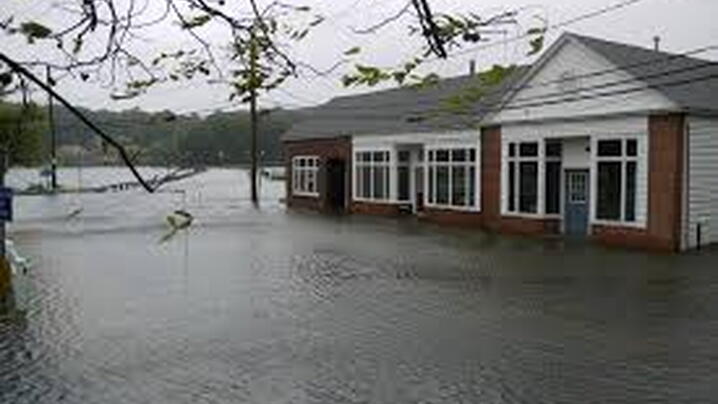
by Phil Green, assistant city administrator, Blair, Nebraska
The past two months have been extra busy attending numerous special meetings, coordinating emails, and preparing flyers and press releases to help with immediate and long-term needs of those affected by the flooding in my county. Fortunately, we had a team of volunteers at the ready.
Missouri River flooding in 2011 caused extensive damage in Nebraska and Iowa, as well as areas farther south. Dozens of residential properties in the city of Blair and in Washington County, Nebraska, were inundated with floodwater for months. Some families could rebuild; many could not.
Local Government Leads
During this disaster, local nonprofit and faith-based leaders came together to provide assistance. As the local government representative, I agreed to lead this countywide group of volunteers. It was clear that my work in local government, familiarity with FEMA disaster preparedness, and ability to plan and coordinate were important.
Eventually, this ad hoc group of citizens organized as a long-term recovery group, serving all of Washington County. We incorporated, established a board of directors, and joined the Nebraska Voluntary Organizations Active in Disaster (VOAD) so we could collaborate with others in our region
Our local group of disaster volunteers is not unique. In the National Response Framework, the federal government acknowledges, “The government does not, and cannot, work alone. In many facets of an incident, the government works with private sector groups as partners in emergency management.” This 'working together' should occur at the national, state, and, especially, at the local level. My involvement has convinced me that local governments should play an active role in planning and coordinating for disasters alongside nonprofit and faith-based organizations.
FEMA offers extensive resources to help local governments, their communities, nonprofit organizations, and volunteers prepare for all phases of disaster management – preparedness, response, relief, recovery, and mitigation. FEMA’s publication Pre-Disaster Recovery Planning Guide for Local Governments stresses that “preparedness is a shared responsibility, and it is important that planning be a whole community activity involving individuals; businesses; faith-based and community organizations; nonprofit groups; schools and academia; media outlets; cultural, environmental, and recreational organizations; and all levels of government.”
FEMA’s Strategic and Operational Planning webpage stresses that NIMS, the National Incident Management System, is intended to be used by the whole community: individuals, families, the private and nonprofit sectors, and faith-based organizations – not just the various levels of government.
Going Beyond Traditional Boundaries
Just as it is becoming routine for local governments to directly provide or contract for executive and administrative support for economic development, tourism, community engagement, and affordable housing, my experience has shown that local governments should consider directly providing, contracting for, or at least collaborating to ensure executive and administrative support to enable local private, nonprofit, and faith-based organizations to participate in all phases of local disaster management.
This is significantly different than the traditional emergency management activities performed by municipalities and counties. The traditional efforts tend to focus on municipal infrastructure and are supported by FEMA through public assistance programs. I believe local governments should also consider how they can support the federal and local use of individual assistance programs. Coordinating with private, nonprofit, and faith-based groups is essential.
Every state in the United States has a VOAD chapter, organized under the National VOAD. These VOADS, and the local organizations that join them, are committed to fostering the four C’s – communication, coordination, collaboration, and cooperation – in order to better serve people impacted by disasters.
Volunteers and donors can support response efforts in many ways, but it is difficult for volunteers to manage these efforts. Local governments should provide the executive and administrative support necessary to effectively incorporate volunteers and donated goods into the response activities supporting their community.
 Phil Green
Phil Green

Assistant City Administrator
Blair, Nebraska
Want to learn more about supporting your community during a crisis? In the Leading Edge Research report, "Leadership and Professional Local Government Management: Before, During, and After a Crisis", Ron Carlee, D.P.A., captures the ideas, feelings, and stories of the professional managers who were involved in different crises. By analyzing the common and effective leadership and management skills and techniques that professional managers deploy when a crisis strikes, we can better understand the lessons learned from managers and identify leading or promising practices that can be adopted by others. Download the report today!
New, Reduced Membership Dues
A new, reduced dues rate is available for CAOs/ACAOs, along with additional discounts for those in smaller communities, has been implemented. Learn more and be sure to join or renew today!
